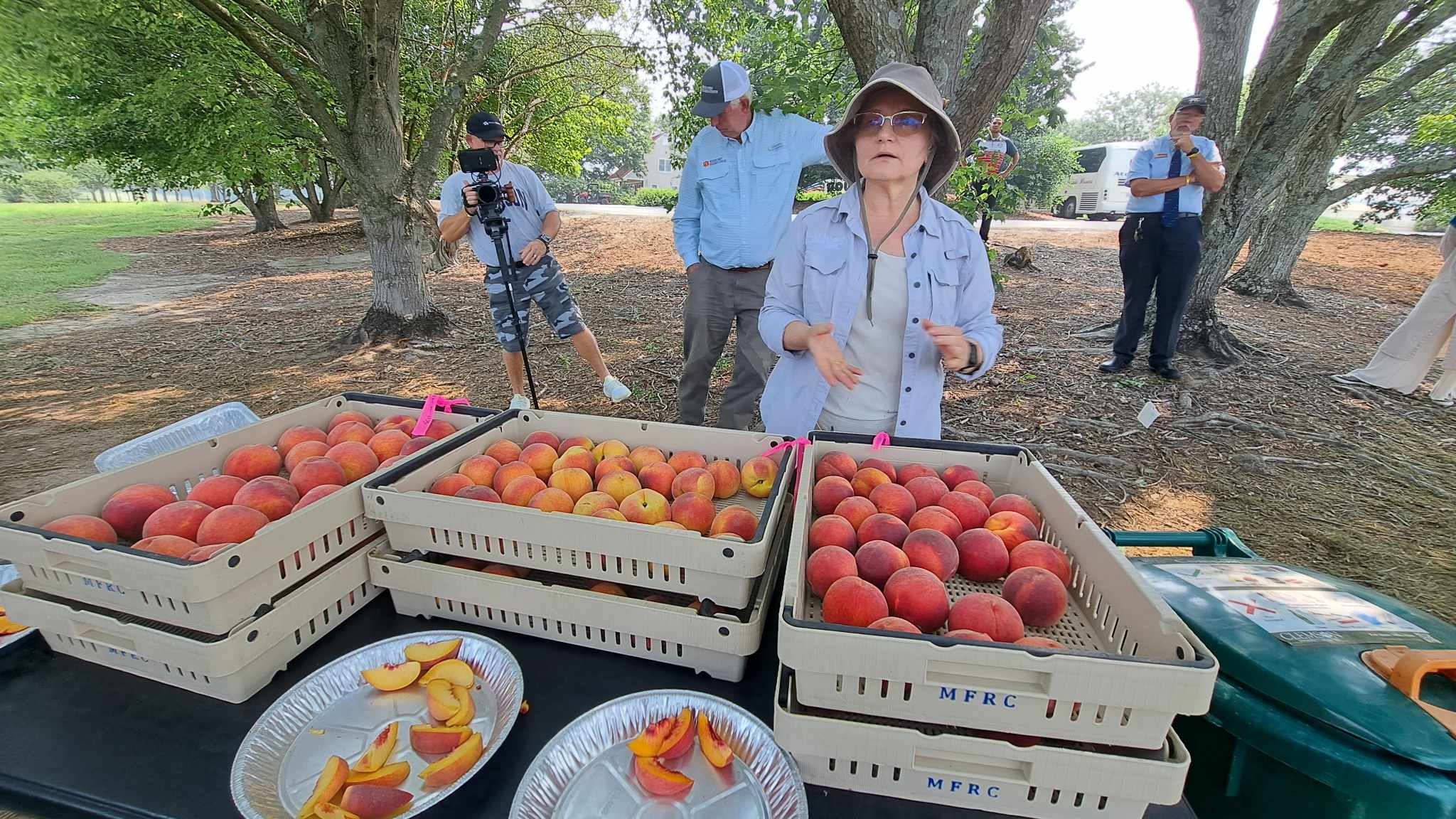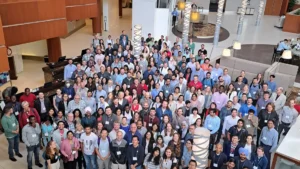The history of Ksenija Gasic’s peach breeding program at Clemson University began in 2008 when it was established from the ground up. The program was initiated due to the absence of significant advancements in peach breeding in South Carolina and the Southeast region in 2007. The lack of progress, along with challenges like spring frost, prompted the need for a new breeder to address the industry’s problems. Consequently, a partnership was formed with the university to create this position.
When Gasic started in 2008, the production of fresh market peaches in South Carolina was flourishing, making it the second-largest producer in the nation. However, certain challenges, particularly the impact of the region’s heat and diseases, persisted. One such disease was bacterial spot, which affected both the leaves and fruits of peaches, leading to defoliation and reduced reserves for future growth. The susceptibility of peaches to bacterial spot was a significant concern, as it could impact the next year’s production.
Gasic and her team — also made up of Greg Reighard, Guido Schnabel, Juan Carlos Melgar, Libby Cieniewicz, Hehe Wang, and Nathan Smith — focused on tackling the issue of bacterial spot by directing her attention towards the fruit. Extensive research revealed that fruit tolerance was controlled by only two major genes. This discovery paved the way for the development of markers that could identify the presence of these genes.
“Marker-assisted selection became a crucial tool in the program, allowing us to eliminate susceptible seedlings at the early stages of growth in the greenhouse,” she said today during a tour of the Clemson University peach orchards. The tour was held as part of the National Association of Plant Breeders (NAPB) annual meeting being held in Greenville, SC.
By avoiding the planting of predicted susceptible varieties, the program aimed to release cultivars that were predicted to be tolerant or even resistant to bacterial spot.
It is worth noting that the susceptibility or tolerance of the fruit and leaves are not directly connected. A peach tree could exhibit susceptibility or tolerance in either the fruit or the leaves, independently of each other. With the focus on fruit tolerance, the goal of Gasic’s team was to develop peach cultivars that showed resistance to bacterial spot in the fruit.
This approach was vital because fruit damage had a more significant impact on growers’ concerns, as it affected the quality and marketability of the peaches.
Through marker-assisted selection and the development of markers associated with fruit tolerance genes, the breeding program made significant progress in producing tolerant or resistant peach cultivars. The program utilized these markers to eliminate susceptible varieties at the seedling stage, ensuring that only promising candidates were advanced for further development and eventual release.
Peaches Have Faced Many Challenges, Including These
While climate change poses significant challenges to peach production, it is not the only obstacle that growers have had to overcome. In 2008, a peach breeding program was initiated in South Carolina and the Southeast to tackle various issues, including disease susceptibility and changing climate conditions.
Dealing with Bacterial Spot Disease
Bacterial spot is a highly destructive disease that affects peaches, particularly in the Southeastern region. It poses a major challenge to growers as it affects both the leaves and fruits, resulting in defoliation and diminished reserves for future growth. The breeding program now led by Ksenija Gasic addressed this issue by focusing on fruit resistance.
Through the identification and utilization of markers associated with fruit tolerance genes, susceptible seedlings were eliminated in the early stages of selection, ensuring that only cultivars with tolerance or resistance were planted.
Fighting Brown Rot Disease
Brown rot, caused by the Monilinia fungus, is another significant threat to peach production. This destructive disease leads to fruit decay and the rapid spread of spores, demanding meticulous control efforts from growers. While chemical solutions have been developed to manage the pathogen, the fungus has shown increasing tolerance to these treatments.
To combat this challenge, the breeding program employed a dual tolerance approach. By combining chemical applications with strategic testing and isolation of fungal isolates, growers can optimize their treatments to slow down the spread of the tolerant fungus.
Adapting to Climate Challenges
Climate change has undoubtedly posed substantial challenges for peach production, affecting bloom time, fruit quality, and ripening. Insufficient chilling hours and sudden heat spikes disrupt the normal growth patterns of peaches, resulting in reduced yields and compromised fruit quality. To adapt to changing climate conditions, the breeding program focused on developing peach cultivars with reduced chilling requirements.
However, relying solely on early-blooming varieties proved challenging due to the unpredictability of late frosts. The program also explored the concept of the “food development period,” where early bloomers adjust their ripening time to align with their typical schedule, compensating for the advanced bloom.
Advancements in Breeding and Selection
The peach breeding program has made significant strides in terms of efficiency and accuracy. Through the use of markers and marker-assisted selection, Gasic’s program has streamlined the selection process, reducing the number of seedlings planted each year while increasing the likelihood of disease tolerance in selected cultivars. Hormone treatments and innovative DNA extraction techniques have also expedited the breeding process, enabling faster cross-pollination to the release of new cultivars. These advancements have significantly contributed to meeting the industry’s needs in a more efficient manner.













